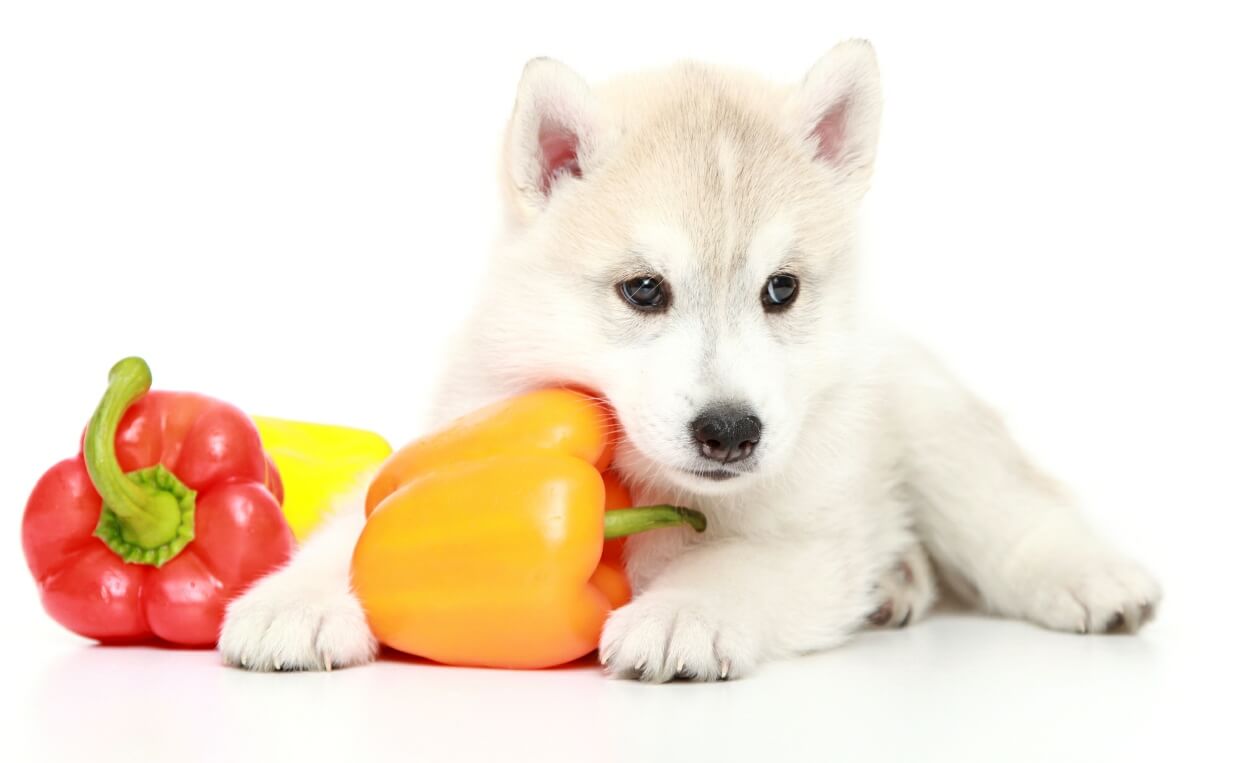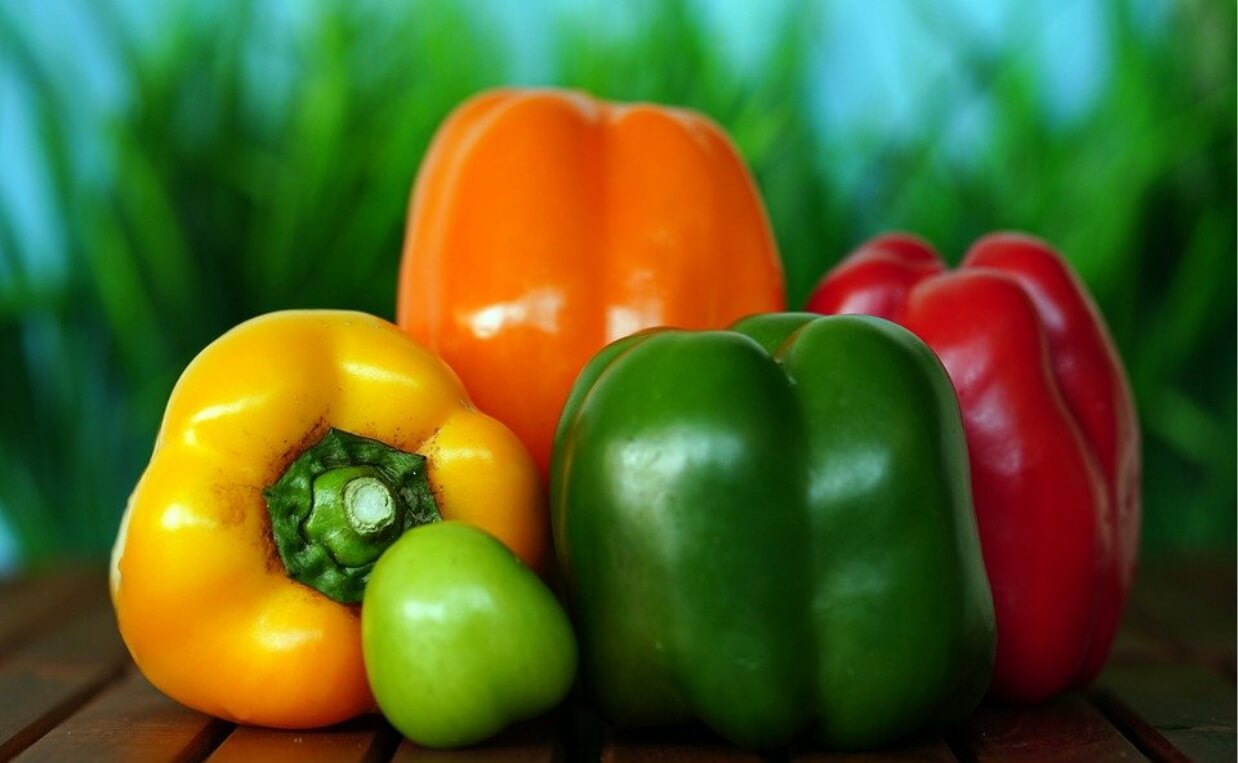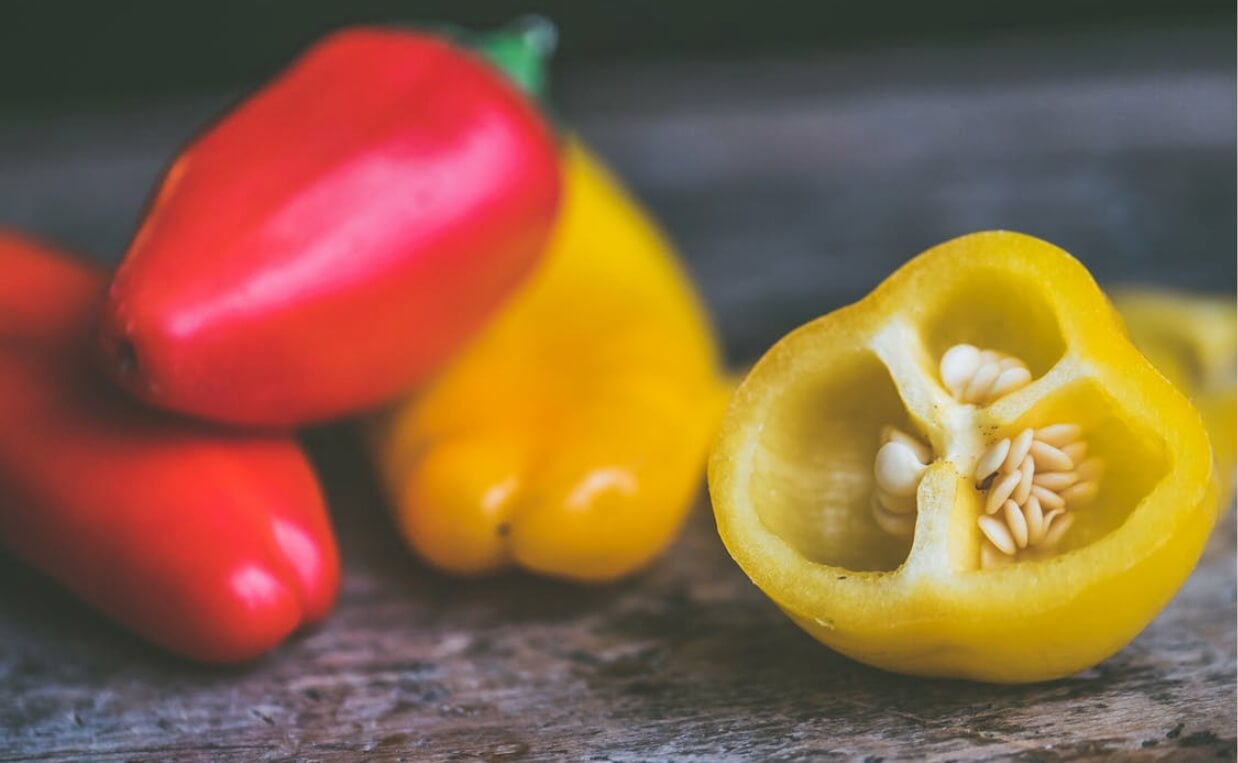
If you’re a dog parent, you probably already know most dogs will eat just about anything. Usually, if food falls to the floor, your dog will likely be right there to pick it up. But not everything humans eat is good for dogs.
Read more: The Ultimate Guide to Foods You Can and Can’t Feed Your Dog
Are Bell Peppers Safe For Dogs?
Yes, bell peppers are safe for dogs. They pack a punch when it comes to nutritional value for both you and your pup. Bell peppers are not toxic for canines and are a healthy alternative snack to share with your dog.
Does the Color of the Bell Pepper Matter?
Any color bell peppers contain the essential vitamins and nutrients beneficial for a dog’s health, although the red type are more nutritious. They are the best to feed to your dog because they contain the highest amounts of vitamins and antioxidants.

What Health Benefits Do Bell Peppers Have for Dogs?
Bell peppers are rich in the vitamins A, E, B6 and lutein and are great sources of Vitamin C and beta-carotene, which are antioxidants important for a dog’s healthy immune system. Beta carotene can be converted into Vitamin A in the body and is important for skin, coat and eye health.
Bell peppers can also provide some relief from gastrointestinal problems such as diarrhea because of the antioxidants within the peppers. These vitamins and antioxidants are good for your dogs skin, coat, joints, energy levels, digestion, and more.
How Many Bell Peppers are Safe for Your Dog to Eat?
As with any human food, bell peppers should be introduced slowly into your dog’s diet. Some dogs will be fine with it, but some dogs might not tolerate them very well. Large dogs should not eat more than one-half pepper and small dogs shouldn’t eat more than a quarter of a pepper at a time. Remove the seeds and stems to prevent indigestion.
Feeding your dog too much at a time might cause a stomach upset, vomiting and/or diarrhea. As with other vegetables, don’t overload your dog because GI upset can occur.

How Should Bell Peppers Be Prepared for Your Dog?
Don’t add salt, pepper or other seasonings, or feed them mixed with onions or garlic, as those ingredients are toxic to dogs. It’s also important to note you should never give your dog spicy peppers, such as jalapeños or chili peppers, because they contain capsaicin which can cause irritation.
The outer skin of a bell pepper can be tough and difficult to chew, so you can steam or puree the bell pepper to make it easier for your dog to digest. Remember to consult your veterinarian before introducing any new human food into your dog’s diet.

 5 Signs Your Dog Has Food Allergies
5 Signs Your Dog Has Food Allergies What to Do If Your Dog is a Picky Eater
What to Do If Your Dog is a Picky Eater Understanding and Managing Dog Food Sensitivities
Understanding and Managing Dog Food Sensitivities 10 Holiday Foods That Can Give Your Dog an Upset Stomach
10 Holiday Foods That Can Give Your Dog an Upset Stomach Why Isn’t My Puppy Eating?
Why Isn’t My Puppy Eating?






Leave a Reply